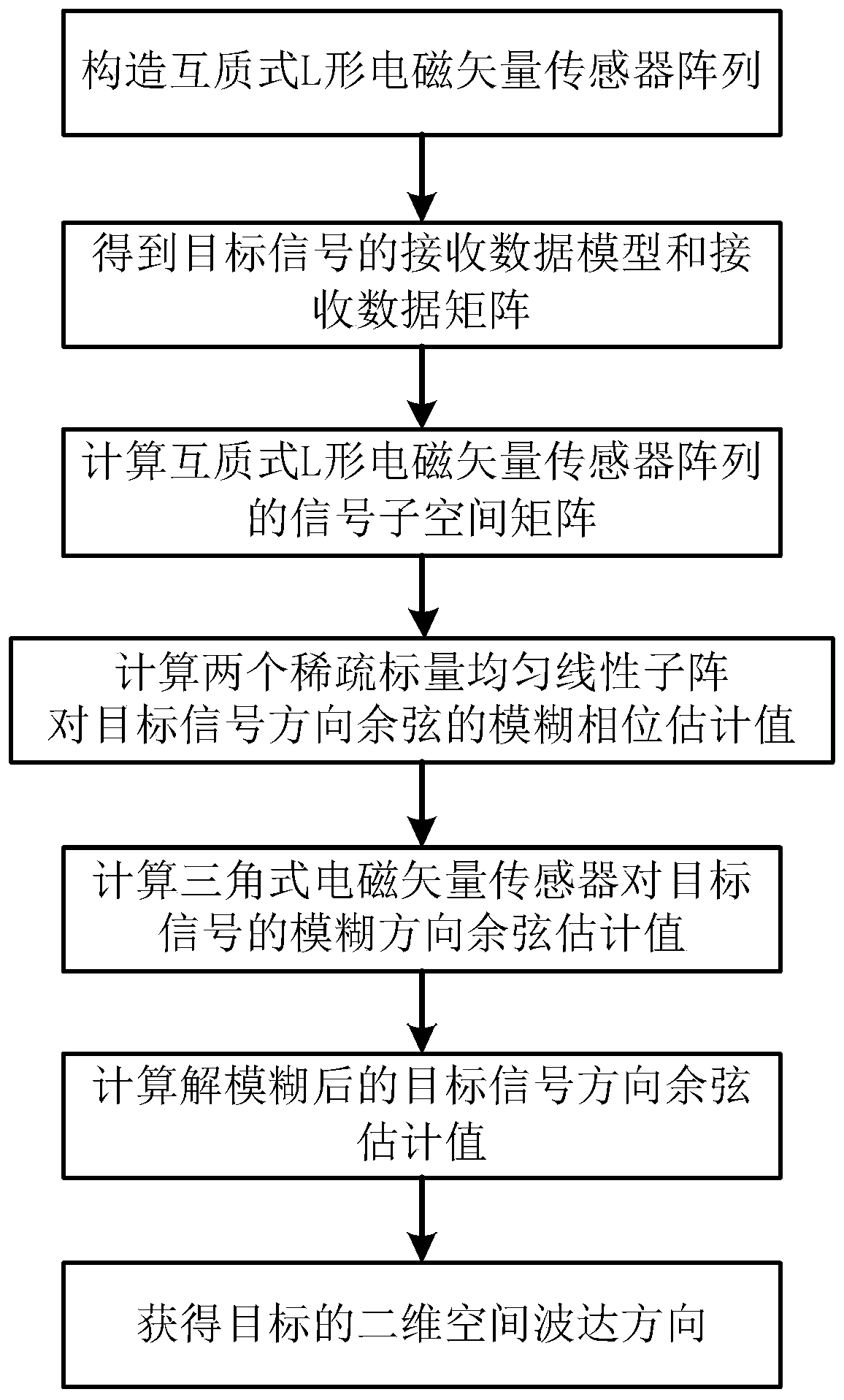Direction-of-arrival estimation method based on coprime-type L-type electromagnetic vector sensor array
A sensor array and electromagnetic vector technology, applied in the field of radar, can solve the problems of limited uniform linear array aperture, large mutual coupling of array units, and low accuracy of angle measurement, so as to reduce computational complexity, reduce mutual coupling, and computational complexity low effect
- Summary
- Abstract
- Description
- Claims
- Application Information
AI Technical Summary
Problems solved by technology
Method used
Image
Examples
Embodiment Construction
[0039] The specific implementation process and effects of the present invention will be further described below in conjunction with the accompanying drawings.
[0040] refer to figure 1 , the implementation steps of the present invention are as follows.
[0041] Step 1. Construct a coprime L-shaped electromagnetic vector sensor array.
[0042] (1a) Construct a triangular electromagnetic vector sensor located at the origin:
[0043] Establish a three-dimensional Cartesian coordinate system in space, and the electric dipole e parallel to the y-axis y Placed at the origin, on the y-axis with the electric dipole e at the origin y distance Δ x,y Place an electric dipole e parallel to the x-axis at the position x , on the x-axis with the electric dipole e at the origin y distance Δ y,z Place an electric dipole e parallel to the z-axis at the position z , and satisfy Δ y,z =Δ x,y ;
[0044] At the point in space (x h ,y h ,z h ) Place a magnetic ring h perpendicular to ...
PUM
 Login to View More
Login to View More Abstract
Description
Claims
Application Information
 Login to View More
Login to View More - R&D
- Intellectual Property
- Life Sciences
- Materials
- Tech Scout
- Unparalleled Data Quality
- Higher Quality Content
- 60% Fewer Hallucinations
Browse by: Latest US Patents, China's latest patents, Technical Efficacy Thesaurus, Application Domain, Technology Topic, Popular Technical Reports.
© 2025 PatSnap. All rights reserved.Legal|Privacy policy|Modern Slavery Act Transparency Statement|Sitemap|About US| Contact US: help@patsnap.com



